Unexpected Color Echoes
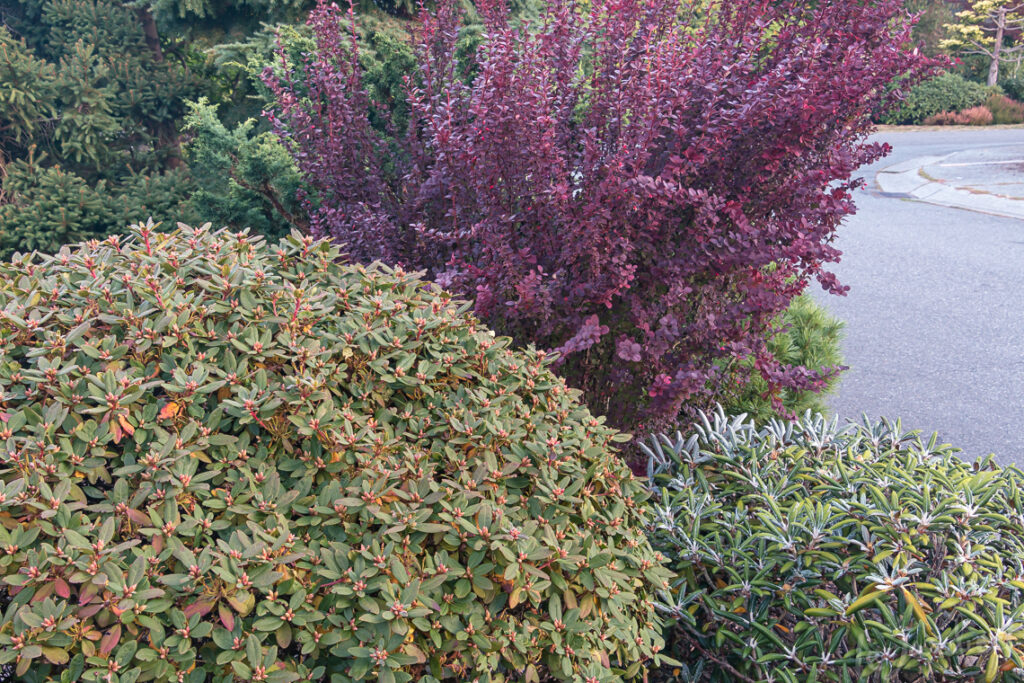
Repetition of color in a garden is an easy way to bring a sense of cohesion to a design and is often called a 'color echo'. When designing 'foliage first' this color echo may be between a leaf and a flower or even between two or more different leaves, yet there are many more adventurous options you can try.
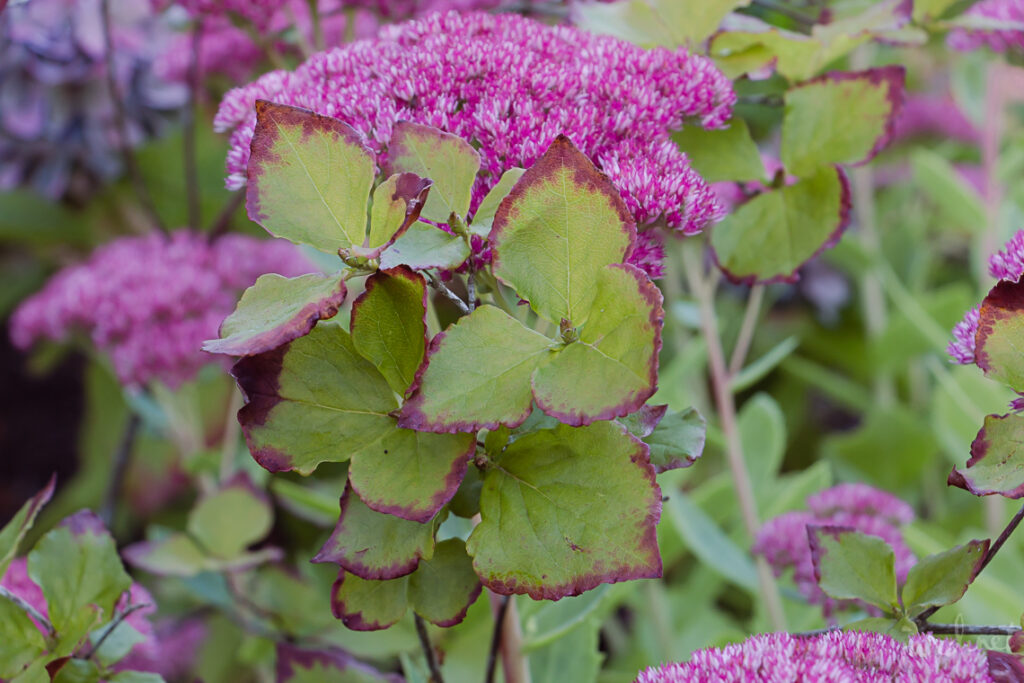
A serendipitous weaving of a stonecrop bloom and early fall foliage of R. nudipes made me look twice!
This week I had the opportunity to visit an exquisite, private garden in Edmonds, WA. nurtured and curated by the homeowner for 30 years. As an avid, self-confessed Rhododendron collector I had not anticipated the variety of colors and textures, nor her intuitive attention to design detail including color repetition which rarely relied on blooms. I'm delighted to have been given permission to share a few highlights with you, focusing on unexpected color echoes that truly bring this garden to life and underpin the design as a whole.
Using Bark

With the richly colored peeling bark of Acer griseum taking center stage, the eye eye is drawn in a diagonal line from the felted Rhododendron bureavii 'Lem' in the foreground to the fall color of a deciduous Rhododendron farther back.
Paperbark maple (Acer griseum) is a favorite deciduous tree of mine and I was thrilled to see this beautifully pruned specimen taking center stage in the garden. The mahogany peeling bark is stunning in all four seasons and just begs for some creative companion plantings.
In this garden the warm cinnamon indumentum on the undersides of Rhododendron bureavii 'Lem' was a perfect echo, the compact size of the shrub ensuring that the bark was clearly visible. The color story continues with the deciduous Rhododendron (one of the Lights series) in the distance just beginning it's fall display.
Using Faded Stamens & Petals
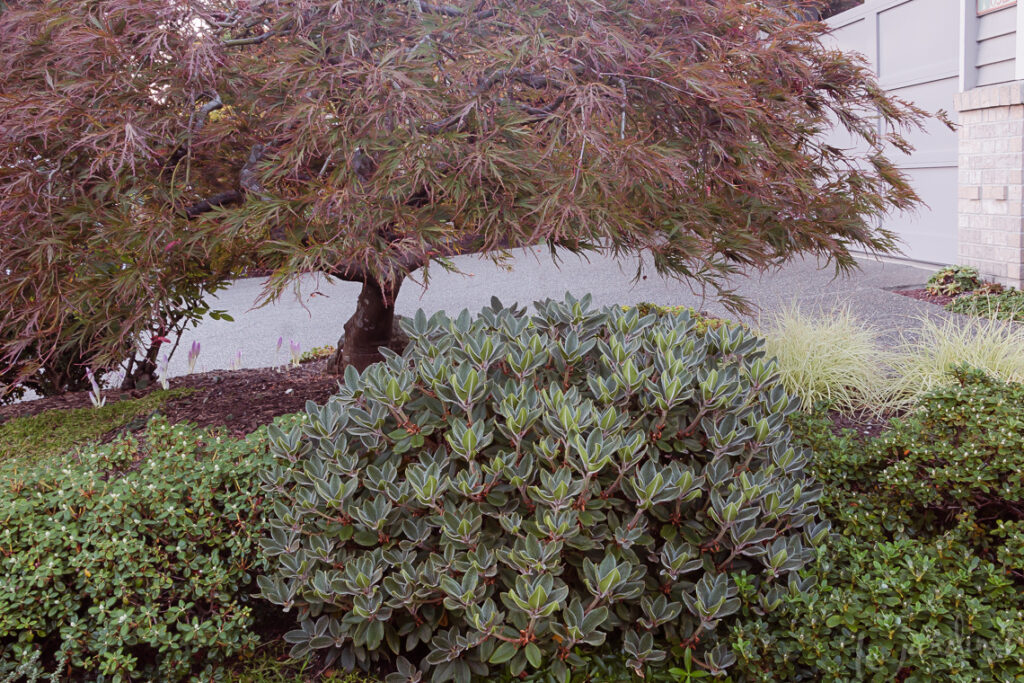
By limbing up this weeping Japanese maple, an understory of dwarf shrubs and grasses can be added to extend the interest.
This vignette had me down on my hands and knees to better appreciate the subtle details. With the weeping Japanese maple perfectly pruned to showcase its structure the dwarf Rhododendrons planted at the edge of the lacy canopy were allowed to shine. The R. pseudochrysanthemum in the center really caught my eye with its upturned foliage that had a soft silver indumentum on the upper side of the leaf that extended down the juvenile stems . That cool silver contrasted with the faded brown stamens of spent spring blooms, which rather than being a distraction echoed the delicate, dissected foliage of the maple overhead.
To the right a cushion of R. pemakoense was studded with creamy-yellow buds which in turn echoed fluffy tufts of the grass-like Carex o. 'Evergold', while R. megeratum forms a similar cushion to the left.
Using Buds & Branches
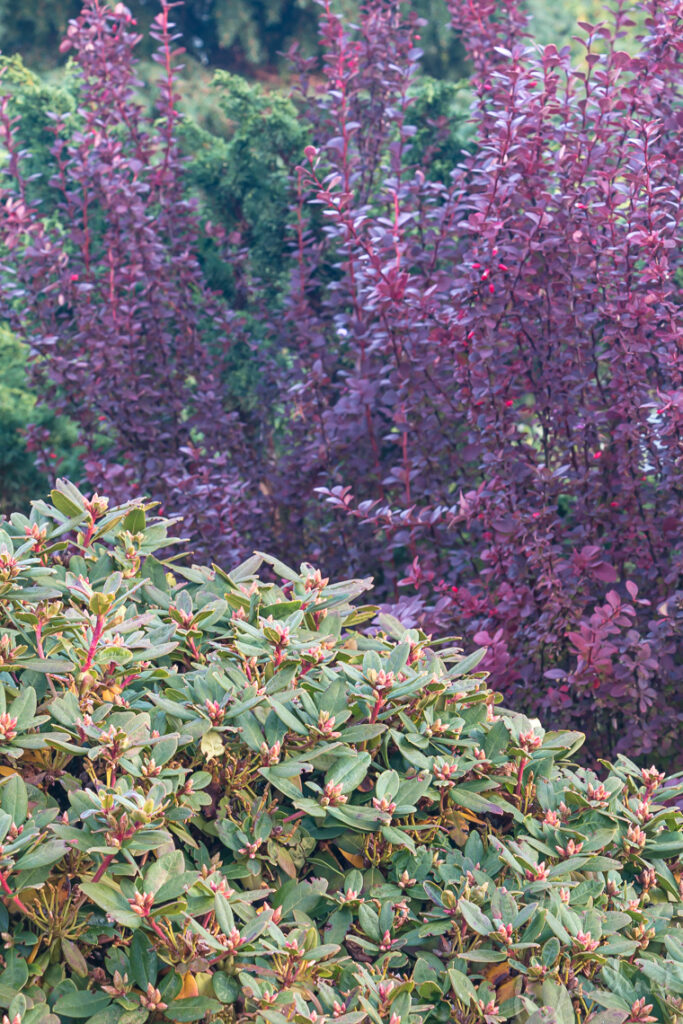
Look for color suggestions in buds and stems of Rhododendron 'June Bee' to inspire colorful combinations
Great design is often a result of simply observing the details such as the way the juvenile pink stems of R. 'June Bee' seem to bleed into the buds – then echoing that color with a shrub such as the Orange Rocket barberry seen here. The wider combination is shown in the lead image which also includes R. yakushimanum.
Using Berries
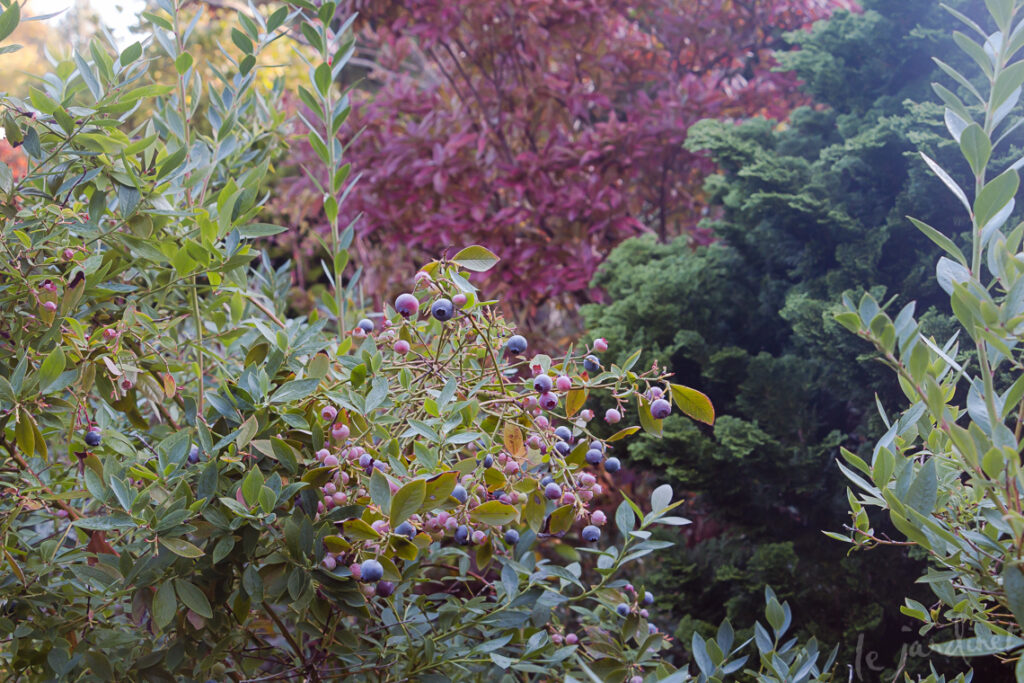
Designing with blueberries: here the berries echo the distant deciduous Rhododendron but soon the fiery fall foliage of the blueberry shrub will join in.
Many of us enjoy growing a few edibles in the garden. I loved the way this Rhododendron collector had incorporated several blueberry bushes into the space, their ripening berries drawing the eye to the ruby fall color on a nearby deciduous Rhododendron.
Using Hardscape & Structures
Hardscape refers to the non-plant elements in a garden such as pavers and patios. It's not often that I get excited about gravel paths – but I did here! The grey/brown blend of gravel edged with brown pavers was the perfect foil to this larger form of R. pseudochrysanthum. The silver indumentum on the leaf surface together with the brown detail on the buds offered a color echo that stopped me in my tracks.
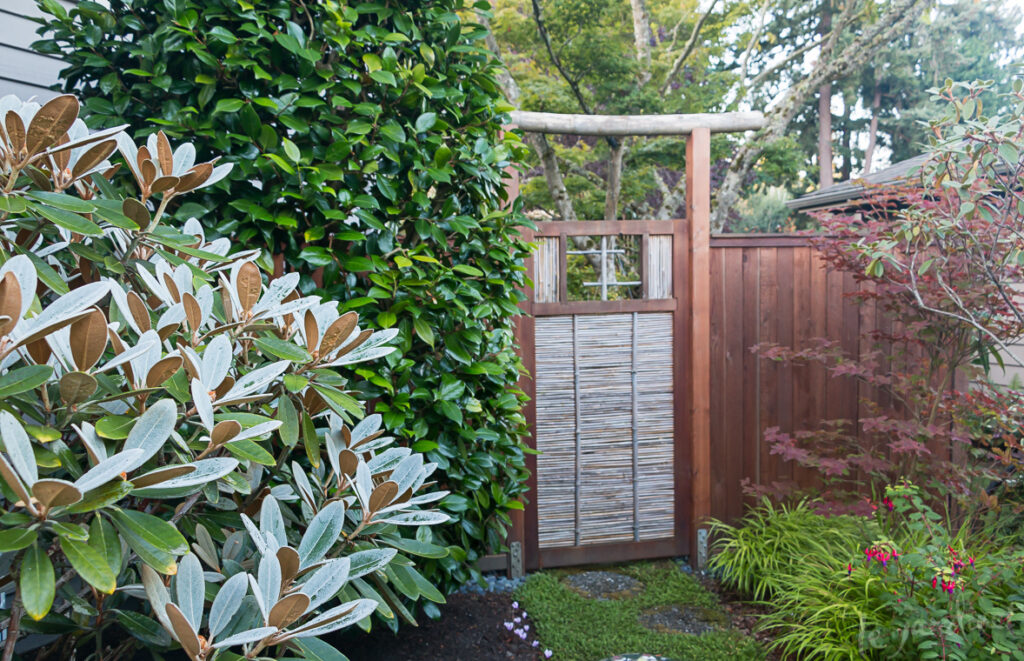
A custom gate designed by D'Arcy Ghoston encourages further exploration – but not before appreciating the plantings on either side
A custom gate with inlaid bamboo marks a transition to the back garden while the foliage colors of the adjacent Rhododendron hybrid ensure this vignette is not one you will rush past but rather pause and savor.
Using Art
Sadly, I only have a cell phone snap of this combination so the focus is not as tight as I would have liked. Regardless, it showcases not just a soft-green color echo between the mossy shield fern foliage (Polystichum setiferum 'Plumosum densum')and ceramic art but also repetition of shape since the circular, orangey-brown spores on the undersides of each frond echo the circle motif on the sculptural forms too. Perfect placement!
One would have imagined that the garden of a Rhododendron collector would look stunning in May, but rather pedestrian for the remaining season when little is in bloom. This garden is a fabulous example of how to design with a collection for year-round interest that still keeps the spotlight on the specimens. Color echoes are just one part of that process. I'll be discussing more in my presentation to the American Rhododendron Society next year.
Subscribe to Receive Blog Posts
Gardening inspiration delivered right to your inbox from Le Jardinet
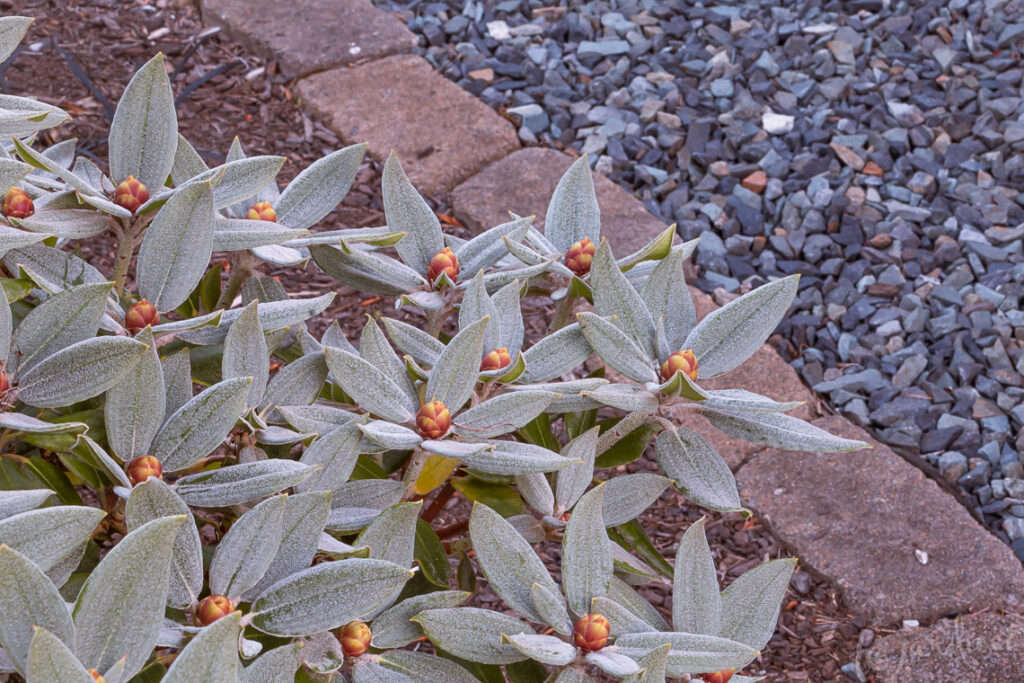
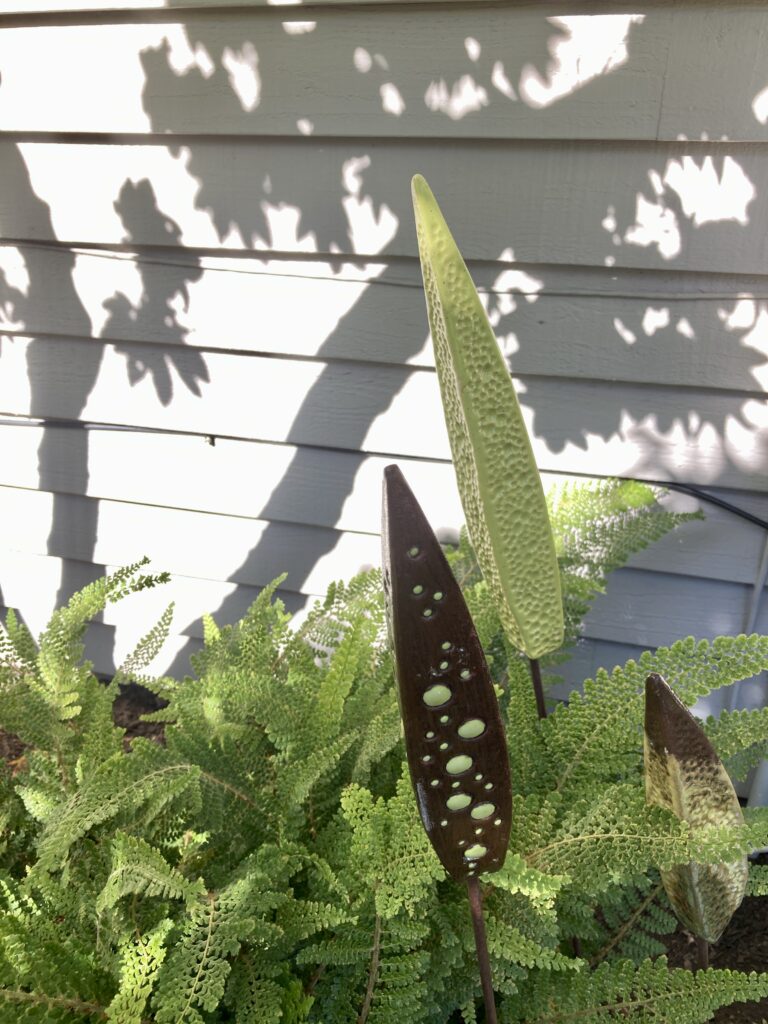
This person might like to have their garden featured on the next Edmonds in Bloom tour!
I believe it has been in the past